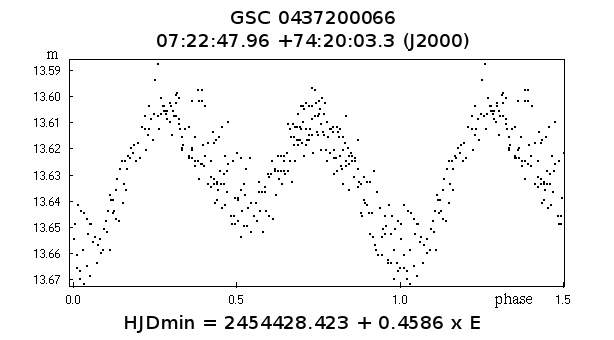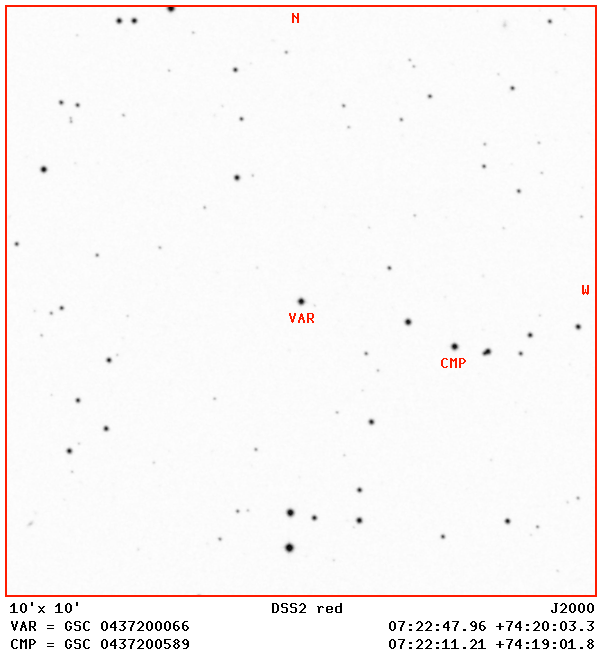| Article in PDF |
"Peremennye Zvezdy", Prilozhenie, vol. 8, N 22 (2008) |
Low-Amplitude Eclipsing Binary Star GSC 04372-00066
T. Kryachko#1, K. V. Sokolovsky#2,3, D. Denisenko#4, B. Satovskiy#1
#1. Astrotel Observatory, Karachay-Cherkessia, Russia;
#2. Max Planck Institute for Radio Astronomy, Bonn, Germany;
#3. Astro Space Center, Lebedev Physical Institute, Russian Academy of Sciences,
Moscow, Russia;
#4. Space Research Institute, Russian Academy of Sciences, Moscow, Russia
#2. Max Planck Institute for Radio Astronomy, Bonn, Germany;
#3. Astro Space Center, Lebedev Physical Institute, Russian Academy of Sciences, Moscow, Russia;
#4. Space Research Institute, Russian Academy of Sciences, Moscow, Russia
| ISSN 2221–0474 |
Received: 3.05.2008; accepted: 22.05.2008
(E-mail for contact: ksokolov@mpifr-bonn.mpg.de)
| ||||||||||||||||||||||
Remarks: |
| We report the discovery of a new W UMa eclipsing binary with a very small variability
amplitude. The depth of the primary minimum is 0.05 mag only. Min II = 13.64. The
primary minimum is 0.015 mag deeper than the secondary one.
The observations where performed with the Astrotel-Caucasus robotic telescope (D = 300 mm, F = 2310 mm) equipped with an unfiltered STL-11000M CCD camera. Our variability search used VaST software (http://saistud.sai.msu.ru/vast/). Unfiltered magnitudes were calibrated using a nearby star GSC 04372-00589 ( = USNO-B1.0 1643-0055251, 07:22:11.21, +74:19:01.8 [J2000]; R1 = 13.86, R2 = 13.58), assuming R_comp = 13.72. Acknowledgments. The authors are grateful to Dr. V.P. Goranskij for providing us with the period analysis software. This research has made use of the Aladin interactive sky atlas, operated at CDS, Strasbourg, France and the International Variable Star Index (VSX) operated by the AAVSO. K. Sokolovsky was supported by the International Max Planck Research School (IMPRS) for Radio and Infrared Astronomy. |
Light Curve
Finding Chart 
Data Source |